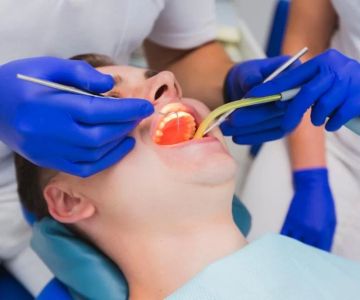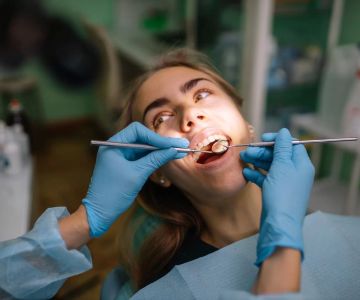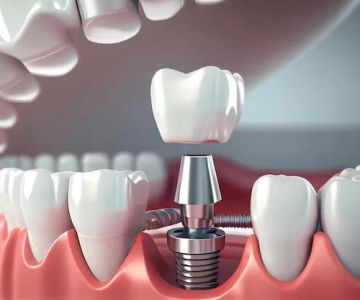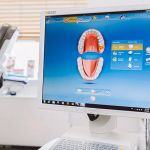Minimal Invasive Dental Treatments: A Modern Approach to Comfortable Dentistry
- 1. What Are Minimal Invasive Dental Treatments?
- 2. Benefits of Minimal Invasive Dental Treatments
- 3. Common Minimal Invasive Dental Techniques
- 4. Patient Experiences and Success Stories
- 5. Choosing the Right Dentist for Minimal Invasive Treatments
1. What Are Minimal Invasive Dental Treatments?
Minimal invasive dental treatments refer to techniques that focus on preserving as much of your natural tooth structure as possible. These treatments are designed to be less painful, faster, and more efficient compared to traditional dental procedures, which often involve more extensive drilling and recovery time. The main goal is to address dental issues while minimizing discomfort, reducing recovery time, and preserving your natural teeth.
In contrast to traditional treatments, minimal invasive techniques typically use advanced technology such as lasers, air abrasion, and microdentistry. These technologies allow for precision in diagnosis and treatment, which ultimately leads to better outcomes and a more comfortable experience for patients.
2. Benefits of Minimal Invasive Dental Treatments
Minimal invasive dental treatments provide a variety of benefits that appeal to patients looking for a more comfortable and less disruptive approach to dental care. Here are some of the key advantages:
- Reduced Pain and Discomfort: Since these treatments use smaller tools and techniques that remove less tooth structure, patients experience less pain during and after the procedure.
- Faster Recovery Time: With minimal disruption to the tooth and surrounding tissues, recovery times are typically much shorter compared to traditional dental procedures.
- Preservation of Natural Teeth: One of the primary goals of minimal invasive dentistry is to preserve as much of your natural tooth structure as possible, which contributes to long-term dental health.
- Enhanced Aesthetic Results: Because minimal invasive treatments are more precise, the results are often more natural-looking and aesthetically pleasing.
- Less Anxiety for Patients: Many people experience dental anxiety, but minimal invasive techniques help reduce this by eliminating the need for extensive drilling and offering a more comfortable treatment environment.
Overall, minimal invasive dental treatments are transforming the way dental care is approached, making it a preferred choice for many patients seeking a more efficient and comfortable experience.
3. Common Minimal Invasive Dental Techniques
There are several common techniques used in minimal invasive dentistry that make it a more attractive option for patients. Some of these include:
- Laser Dentistry: Laser technology is used to treat cavities, gum disease, and even tooth sensitivity. It reduces the need for anesthesia and results in less bleeding and swelling during the procedure.
- Air Abrasion: Air abrasion is a technique that uses a stream of air mixed with fine particles to gently remove decayed tissue from the tooth. It’s often used for smaller cavities and eliminates the need for drills.
- Microdentistry: This approach involves the use of extremely small instruments to treat dental issues with maximum precision. It’s ideal for treating early-stage cavities and other minor dental problems.
- Bonding and Tooth-Colored Fillings: These materials are used to restore teeth that have been damaged by decay or wear. The materials blend with the natural tooth color, providing a seamless and aesthetic result.
These techniques, along with others, allow dental professionals to treat problems early with less discomfort and faster healing, reducing the need for more extensive procedures down the road.
4. Patient Experiences and Success Stories
Patients who have undergone minimal invasive dental treatments often share positive feedback about their experiences. Here are a couple of real-life success stories that highlight the impact of these treatments:
Case 1: Emily’s Journey with Laser Dentistry – Emily, 30, had been struggling with sensitivity in her teeth. After consulting with her dentist, she opted for laser dentistry to address the issue. The procedure was quick, and she experienced no pain or discomfort. Emily was amazed at how fast she recovered and was delighted with the results—no more sensitivity and a healthier smile.
Case 2: John’s Success with Air Abrasion – John, 45, had a small cavity that needed attention but was nervous about the drilling typically associated with fillings. His dentist recommended air abrasion, which he found to be a painless and quick solution. John was thrilled with the results, and the cavity was treated without the need for numbing shots or drilling.
These success stories demonstrate how minimal invasive dental treatments are making a positive impact on patients' oral health and overall experience in the dentist’s chair.
5. Choosing the Right Dentist for Minimal Invasive Treatments
If you’re considering minimal invasive dental treatments, it’s essential to choose a dentist with experience in these techniques. Here are some tips for selecting the right dental professional:
- Look for Specialized Training: A dentist who has undergone additional training in minimal invasive dentistry will have the expertise to provide the best care using the latest technologies.
- Read Patient Reviews: Hearing from other patients who have undergone minimal invasive treatments can give you confidence in your dentist’s ability to deliver effective and comfortable results.
- Consultation and Communication: During your consultation, ask questions about the treatments available, the technology used, and the expected results. A good dentist will be transparent and provide a treatment plan tailored to your needs.
- Technology and Equipment: Ensure that the dental practice is equipped with the latest technology to perform minimal invasive procedures, such as lasers and air abrasion machines.
By selecting a skilled dentist who specializes in minimal invasive techniques, you can feel confident that you’re receiving the best possible care for your dental needs.
If you’re interested in learning more about minimal invasive dental treatments, visit Dentistry Toothtruth for more information on how these modern techniques can improve your dental health and comfort.







 West Coast Dental of Gage3.0 (1043 review)
West Coast Dental of Gage3.0 (1043 review) Dr. Edwin J Szczepanik, DMD4.0 (321 review)
Dr. Edwin J Szczepanik, DMD4.0 (321 review) Aspen Dental - Philadelphia, PA4.0 (326 review)
Aspen Dental - Philadelphia, PA4.0 (326 review) Dental Crown in an Hour: Naples4.0 (121 review)
Dental Crown in an Hour: Naples4.0 (121 review) Pura Dental Center Kingsbridge4.0 (498 review)
Pura Dental Center Kingsbridge4.0 (498 review) Ethos Dental Group4.0 (37 review)
Ethos Dental Group4.0 (37 review) The Importance of Oral Health Education During Pregnancy for a Healthy Pregnancy
The Importance of Oral Health Education During Pregnancy for a Healthy Pregnancy Best Tips for Brushing Your Teeth Properly for Healthy Gums: Essential Techniques for Oral Health
Best Tips for Brushing Your Teeth Properly for Healthy Gums: Essential Techniques for Oral Health Why Skipping Dental Checkups Can Lead to Bigger Oral Health Problems
Why Skipping Dental Checkups Can Lead to Bigger Oral Health Problems Advantages of Porcelain Dental Restorations
Advantages of Porcelain Dental Restorations How Can Diabetes Cause Tooth and Gum Problems? Preventing and Managing Oral Health Issues
How Can Diabetes Cause Tooth and Gum Problems? Preventing and Managing Oral Health Issues Healthy Habits for Promoting Good Oral Health and Hygiene: Tips for a Healthy Smile
Healthy Habits for Promoting Good Oral Health and Hygiene: Tips for a Healthy Smile